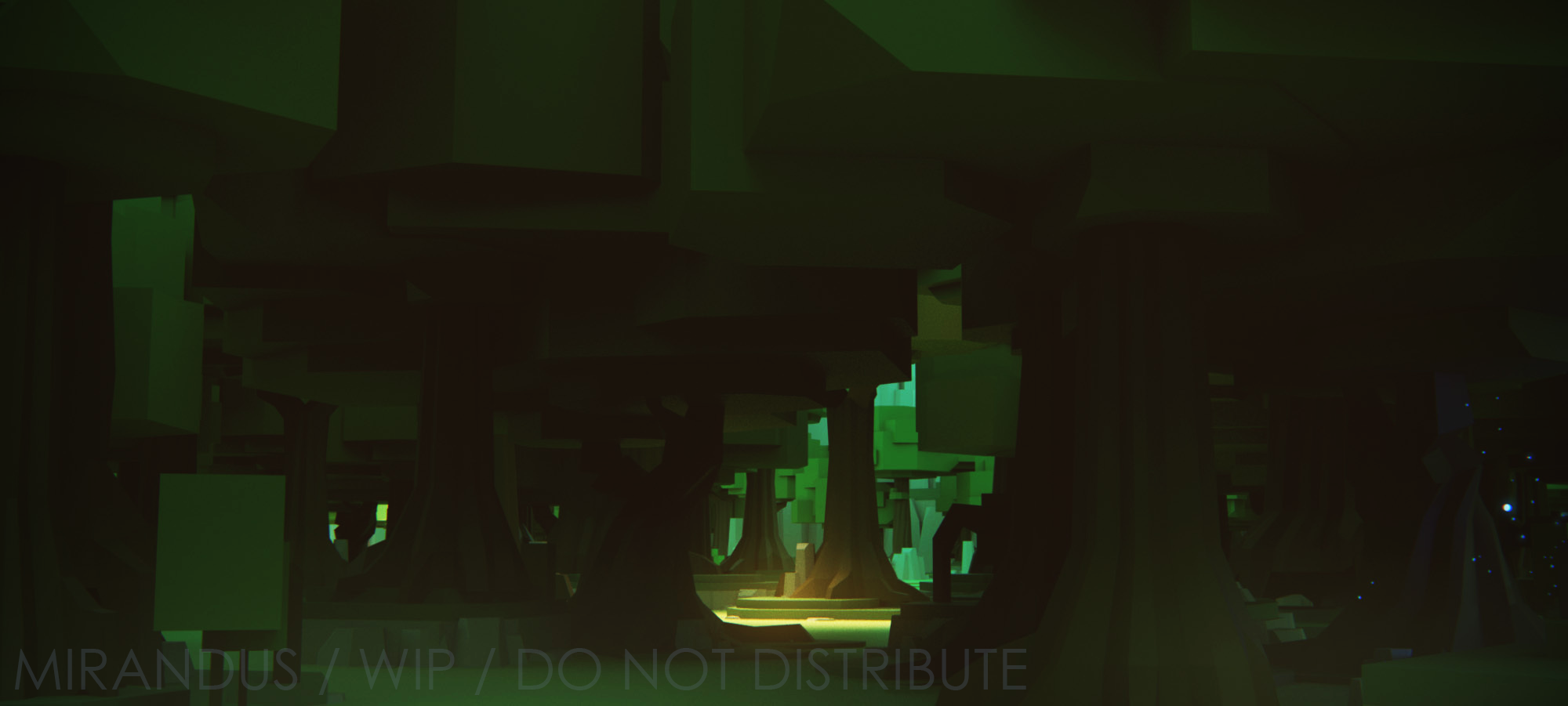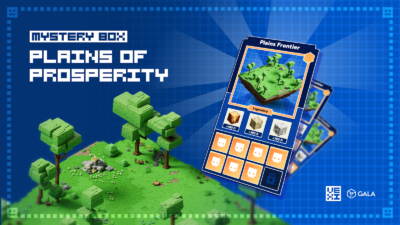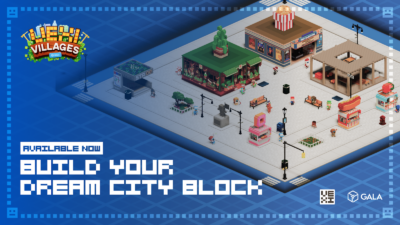
For much of human history, we have looked at forests with a sense of trepidation. Feet which walk confidently on the open road, suddenly walk more carefully on the soft mosses and lichens of the underbrush. The flutter of wings or the snap of a twig, which might pass unnoticed in a sunlit meadow, are brought into crystal clear focus in quiet of the understory. However, none of these noises are nearly as terrifying as — silence.
“I want to be very clear — I don’t want the world of Mirandus, as a whole, to be a scary or dangerous place,” says Studio Director Michael McCarthy. “However, I want there to be some places, like a simple forest for example, that make you realize that while some of the world might be nice and sunny, not everywhere is. Some places should be terrifying and make you check your gear before going inside.”
Earlier gaming had a sense of danger that has largely been lost by more modern games. This is especially true in MMORPGs, where the spawn points for creatures are often quickly identified. Creatures in the games exist for one simple reason — to be killed by player-characters.
What if this wasn’t the case? What if creatures in-game had their own logic and priorities outside of providing crafting fodder for player-characters? What would this kind of game look like?
This is why Gala Games is drawing inspiration from projects like the Mannahatta Project. This project, starting with a 1609 map of Manhattan, seeks to create a fully interconnected ecological web of pre-large-scale colonization of the area currently occupied by New York City. Mannahatta, the Lenape word for “land of many hills,” was the name chosen because the researchers wanted to show what the whole of Manhattan looked like when it was hilly countryside and forests, and before it became one continuous patchwork of concrete and steel.
The Mannahatta Project began by drawing ecological dependency maps, or “Muir webs,” showing how each different animal fits into the ecosystem with those around it. These are similar to the elementary school classes where your teachers might have showed you that an overabundance of rabbits may result in an explosion of the fox population, which would eat the rabbits, etc.
Mirandus is being built as a simulation which you, the player character, are placed in a world which will respond to your presence. Animals and monsters will not have set spawn points where they might reliably be found, but rather vast ranges they might explore, interacting with the other creatures and the environment, and acting according to their logic. This means that if you go into a forest and kill all the rabbits to get pelts for the market, this might mean that the wolves that normally might exist in that range will become hungrier and more dangerous. The lack of adventurers in the forest because of this new danger might make it an attractive home for a den of goblins or a cave full of trolls. Proximity to the forest, as a deed owner, might have some perks, but it also means you are the first to realize that the ecosystem is out of balance. What happens if you cut all the trees down? You might have removed the immediate threat of wolves, but you also might have lowered the water table making it harder and harder to farm. Will we see Rangers forming up to protect and steward the forests — The Dúnedain of Mirandus? Or logging companies? What sort of player-based emergent behavior will be observed?
Mirandus is an extremely ambitious project — we aren’t just building a game, we are building a world, within which you, the player, will serve a central role. This world will grow and evolve as we add to it and as the players exert their own influence. How it will evolve depends so much on player behavior, and we are as excited as you to see what you will do with the world we are building.
Some future players, such as the current Monarchs of the world, are all putting their own indelible stamp on the world. There is much more we want to share, so make sure that you come to GalaCon at the end of February for a special reveal!
The Pieces of Nine
If you own a Gala Games Node license and operate a node, you will have noticed that there was at least one “Piece of Nine” in your Treasure Chest! These are the two first two images from Mirandus, released in NFT art form. While there is a total of 900 shards of each image, only 100 total “sets” can ever be created. We wanted to give something to the whole node holding community and enable you to collect and display some of the great Mirandus art produced by the Gala Games team.
Breweries
Tomorrow, breweries will be minted! Get your mead horn and get ready! They will not be released for sale until somewhat later, once we have made some changes to the store “go live” schedule.





